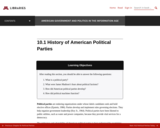
This lesson understand political parties and their origins.
- Subject:
- History
- U.S. History
- Material Type:
- Reading
- Textbook
- Author:
- University of Minnesota
- Date Added:
- 12/10/2021

This lesson understand political parties and their origins.
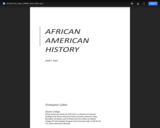
African American History for HIST 244 is a collection of selected readings from African American
History (Lumen), American Yawp, Boundless US History, and US History by Chris Collins for
Skyline College ZTC Early Adopter Program and is licensed under CC BY-NC-SA 4.0, unless
otherwise indicated.

Short Description:
African American Studies: 50 Years at the University of Florida provides an impactful overview of African American Studies; documents the research of Black faculty at UF; examines how African American Studies encourages community engagement and service; contains testimonies from community elders; and includes reflections by and about prominent UF alumni such as Judge Stephan Mickle and Dr. David Horne.
Long Description:
African American Studies: 50 Years at the University of Florida provides an impactful overview of the history of African American Studies at the University of Florida. Chapters are based on papers presented at the 50th Anniversary Commemoration of the African American Studies Program at the University of Florida. In addition to providing a comprehensive history of African American Studies at the University of Florida, the book also documents the research of Black faculty at UF; examines how students, faculty, and staff involved with African American Studies practice community engagement and service; contains testimonies from community elders; and includes reflections by and about prominent UF alumni such as Judge Stephan Mickle and Dr. David Horne.
African American Studies: 50 Years at the University of Florida presents readers with a valuable opportunity to reflect on the past, celebrate the present, and plan for the future of African American Studies, at the University of Florida and beyond.
Download the full-text PDF at https://ufdc.ufl.edu/AA00084945/00001/pdf.
Word Count: 67558
(Note: This resource's metadata has been created automatically as part of a bulk import process by reformatting and/or combining the information that the author initially provided. As a result, there may be errors in formatting.)
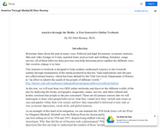
Historians learn about the past in many ways. Political and legal documents, economic statistics, film and video footage of events, material items such as tools and clothing, literature, songs, movies: all of these leftovers from previous eras help historians piece together the different ways that societies change over time. This interactive textbook is designed to help students understand America in the twentieth century through examination of the media produced in that era. Such explorations into the past are called cultural history, which has been defined by the Yale University Department of History as “an effort to inhabit the minds of the people of different worlds.”

Word Count: 101870
(Note: This resource's metadata has been created automatically by reformatting and/or combining the information that the author initially provided as part of a bulk import process.)
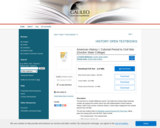
This text from Dr. Franklin Williamson and Dr. Tom Aiello from Gordon State University contains all modular text content used in the LMS implementation of their American History I (HIST 2111) courses. American History 1 covers topics ranging from the colonial period to the Civil War.
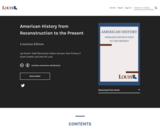
American History II is a survey of United States history from the Civil War era to the present.
Chapter 1: Reconstruction 1865-1877
Chapter 2: Westward Expansion, 1840-1900
Chapter 3: Industrialization, 1870-1900
Chapter 4: Urbanization, 1870-1900
Chapter 5: Gilded Age Politics, 1870-1900
Chapter 6: Progressive Movement, 1890-1920
Chapter 7: Age of Empire, 1890-1914
Chapter 8: Americans in the Great War, 1914-1919
Chapter 9: Jazz Age, 1919-1929
Chapter 10: The Great Depression, 1929-1932
Chapter 11: The New Deal, 1932-1941
Chapter 12: World War II
Chapter 13: Post-War Prosperity and Cold War Fears, 1945-1960
Chapter 14: Contesting Futures: America in the 1960s
Chapter 15: Political Storms at Home and Abroad, 1968-1980; From Cold War to Culture Wars, 1980-2000
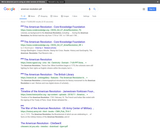
The American Revolution Teacher Guide. Core Knowledge Sequence History and Geography 4
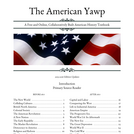
The American Yawp constructs a coherent and accessible narrative from all the best of recent historical scholarship. Without losing sight of politics and power, it incorporates transnational perspectives, integrates diverse voices, recovers narratives of resistance, and explores the complex process of cultural creation. It looks for America in crowded slave cabins, bustling markets, congested tenements, and marbled halls. It navigates between maternity wards, prisons, streets, bars, and boardrooms. Whitman’s America, like ours, cut across the narrow boundaries that strangle many narratives. Balancing academic rigor with popular readability, The American Yawp offers a multi-layered, democratic alternative to the American past.

In an increasingly digital world in which pedagogical trends are de-emphasizing rote learning and professors are increasingly turning toward active-learning exercises, scholars are fleeing traditional textbooks. Yet for those that still yearn for the safe tether of a synthetic text, as either narrative backbone or occasional reference material, The American Yawp offers a free and online, collaboratively built, open American history textbook designed for college-level history courses. Unchecked by profit motives or business models, and free from for-profit educational organizations, The American Yawp is by scholars, for scholars. All contributors—experienced college-level instructors—volunteer their expertise to help democratize the American past for twenty-first century classrooms.
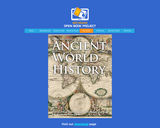
Seventh grade students will review the tools and mental constructs used by historians and geographers. They will develop an understanding of Ancient World History, Eras 1 – 4. Geography, civics/government, and economics content is integrated throughout the year. As a capstone, the students will conduct investigations about past and present global issues. Using significant content knowledge, research, and inquiry, they will analyze the issue and propose a plan for the future. As part of the inquiry, they compose civic, persuasive essays using reasoned arguments.
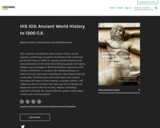
This textbook is divided into three sections: Africa, Asia & Americas, and Europe. It explores the history of the world from pre-historic times to 1300 C.E., paying specific attention to the interconnections (or disconnections) between peoples and regions. Students are encouraged to think beyond their experiences with western civilizations to recognize the widespread impact of historical events and trends, including how they helped shape the world today. Touching upon each world region, the readings investigate the impact of environment, economics, politics, and religion on diverse societies. Key topics are sites of change and integration such as the rise of cities, religion, technology, migration and trade, the spread of disease, gender relationships, warfare and social movements.

Short Description:
The Ancient & Medieval World is a collaborative, open educational resource designed to help students better understand a world long removed from their contemporary experience. The text uses a modular format where students are provided with a brief introduction to each theme, several primary sources, interpretive material written by subject-matter experts, relevant maps and timelines, and visual sources, as well as a glossary of unfamiliar terms. Each module can be used as the foundation of a course assignment or thematic lesson.
Word Count: 75897
ISBN: 978-1-989864-59-3
(Note: This resource's metadata has been created automatically by reformatting and/or combining the information that the author initially provided as part of a bulk import process.)

Short Description:
George Washington Owens was the son of former slaves who migrated to Kansas in the early 1870s to find free land, finally settling in Wabaunsee County, Kansas, near Alma. It was there that he was born in 1875. In his handwritten autobiography, Owens chronicles the difficulties and successes of working hard growing up on the plains and as a student at District School #3 of Alma, and then at Kansas State Agricultural College. After learning that no African American had graduated from KSAC (now Kansas State University), “he resolved to be the first.” He did so, graduating in 1899. Owens continues by describing how he was recruited to Tuskegee Institute in Alabama to work under Booker T. Washington and George Washington Carver, and the methods he used as head of the dairy herd. While at Tuskegee, Owens recalls the marriage to his wife, Waddie L. Hill, a graduate of Clark University, and the successes of their three children. In 1908 his accomplishments at Tuskegee led Owens to becoming a faculty member at Virginia Normal and Industrial Institute (Virginia State University) where he distinguished himself as head of the agricultural program and a leader in vocational agriculture in the South. Owens recorded his life five years before his death in 1950. Ana Elnora Owens, daughter of George and Waddie Owens, donated the autobiography, photographs, and other documents, to the Richard L.D. and Marjorie J. Morse Department of Special Collections, Hale Library, in 1978.
Word Count: 4377
(Note: This resource's metadata has been created automatically as part of a bulk import process by reformatting and/or combining the information that the author initially provided. As a result, there may be errors in formatting.)

Online OER text created for U.S. History to 1865 by Dr. June Klees for Bay College.
© 2017 Bay College and Content Creators. Except where otherwise noted this work is licensed under the Creative Commons Attribution 4.0 International License. To view a copy of this license, visit http://creativecommons.org/licenses/by/4.0/.

Online OER text created for U.S. History 1865 to Present by Dr. June Klees for Bay College.
© 2017 Bay College and Content Creators. Except where otherwise noted this work is licensed under the Creative Commons Attribution 4.0 International License. To view a copy of this license, visit http://creativecommons.org/licenses/by/4.0/.
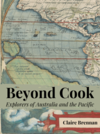
Short Description:
When Europeans entered the Pacific they entered a place they thought they knew, and a place that was already peopled. European explorer accounts of Australia and the Pacific are fascinating in what they reveal about the people and places explorers encountered, and about European expectations of what they would find. This book is a guide to European exploration of Australia and the Pacific; to those accounts of contact and how to interpret them in the light of European preconceptions and misunderstanding; and to the actions taken by the people descended from the regions' original explorers.
Word Count: 31637
ISBN: 978-0-6454198-1-8
(Note: This resource's metadata has been created automatically by reformatting and/or combining the information that the author initially provided as part of a bulk import process.)

Long Description:
The Biographical Dictionary of the History of Paleoanthropology is an ongoing digital humanities project by Dr. Matthew Goodrum, a historian of science who teaches in the Department of Science, Technology, and Society at Virginia Tech. The work contains biographies of individual paleoanthropologists, especially those for whom little information exists in English. They are organized in alphabetical order. Each biography is subject to revision as new information comes to light, and new biographies will be added over time.
Word Count: 92962
(Note: This resource's metadata has been created automatically by reformatting and/or combining the information that the author initially provided as part of a bulk import process.)
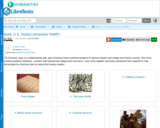
The American Yawp is a collaboratively built, open American history textbook designed for general readers and college-level history courses. Over three hundred academic historians—scholars and experienced college-level instructors—have come together and freely volunteered their expertise to help democratize the American past for twenty-first century readers.
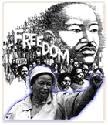
This resource contains some powerpoint slides, google slides, videos, images and worksheets that focus on the civil society protests. It is for specifically designed for Grade 12 learners.